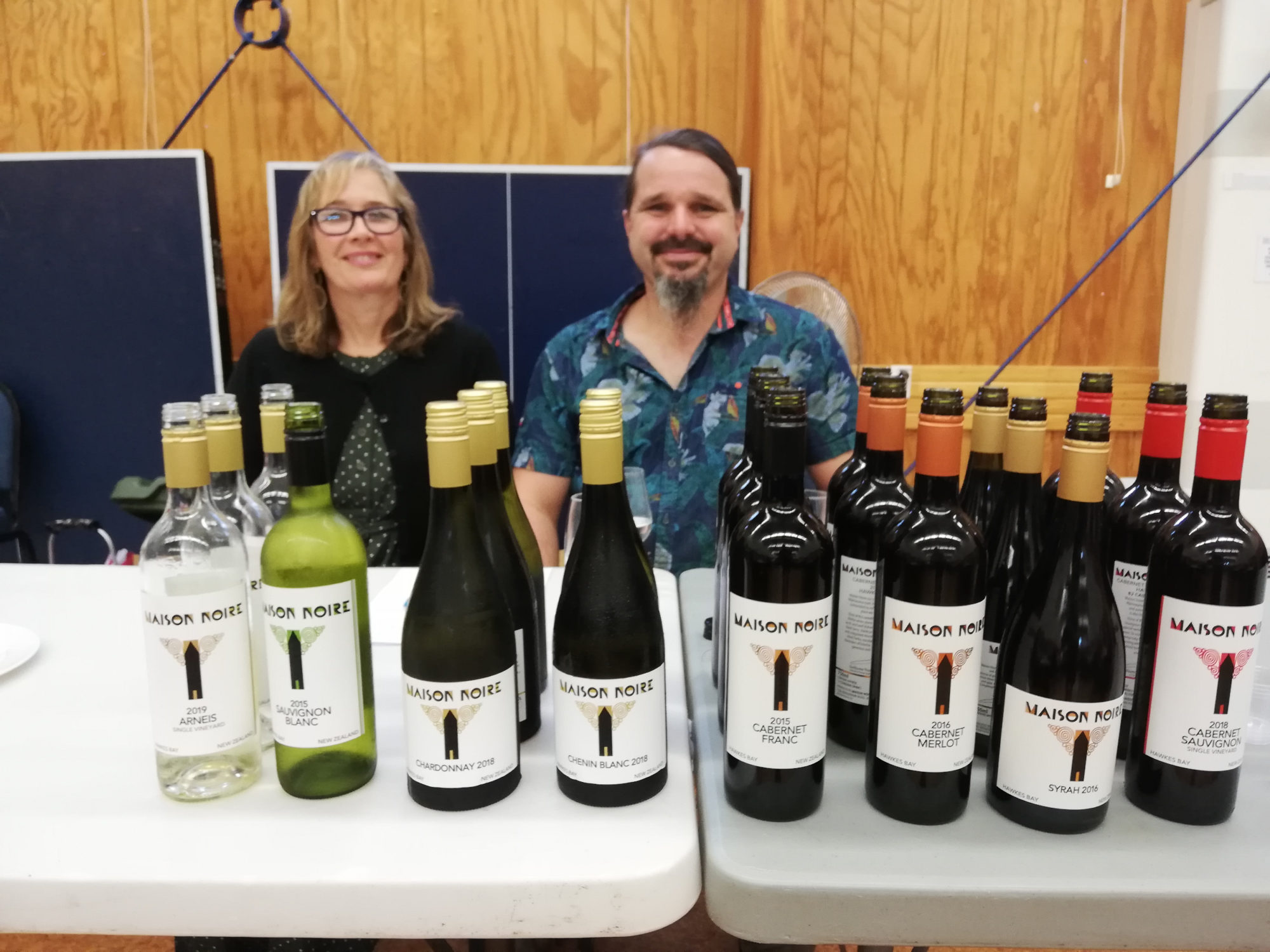Amberleigh Jack, Stuff | 31 May 2022

Wine emojis to help you choose a bottle.
If you feel lost as to what wine to serve at your Moroccan-inspired dinner party this weekend, one website is on a mission to help – using a database of unique, and very cute, specialised emojis.
When lockdown forced Wellington’s Noble Rot Wine Bar to close in March 2020, three wine experts used the downtime to create a database of wine profiles. The ultimate goal was to simplify the wine-buying process for the average consumer.
Two years later, Wine-oji, is a website featuring 221 emoji-like images designed to help anyone pick the perfect bottle of wine, whether they know what wine they enjoy or not.
Noble Rot owners Josh Pointon and Maciej Zimny, with head sommelier Jessica Wood, launched Wine-oji last December. Wood says the response has been “amazing” from consumers and producers.
But what exactly is Wine-oji, and how does a collection of wine-related emojis help someone pick a bottle of wine?

Wine-Oji was an idea born out of lockdown.
The website is a colourful, busy and interactive library of images used to describe flavour profiles, production methods and ideal food pairings for wines.
The list is pretty extensive. Images are allocated to primary aromas, such as fruits and vegetables, as well as floral notes such as jasmine and honeysuckle or earthy tones of oak and wet stone.
Secondary aromas, which come from the winemaking process, oak ageing, oxidation and bottle ageing include popcorn, butterscotch, oak, berries and fruit and tar and rubber, among others.
Wood says while the library of wine emojis is fun, the interactive “find your perfect match” section is where customers can hone in on exactly what they are after in a wine.
“You can search any winery or flavour,” she says. Users can also simply search for the food they plan to eat and find the perfect pairing.
“If you’re cooking snapper tonight, you can type snapper, and it will bring up all the wines that have any of those Wine-ojis allocated to the profile.”

The initial idea began when Wood realised she was fielding questions from customers at Noble Rot about what certain wines taste like.
She says the site also allows people to open their minds a bit to try new wines.
“[You can find] things you’ll actually like, rather than based on wine that’s discounted heavily at the store, or because you tried it before, or like the label. It’s actually all about your experience of the wine.”
The initial idea began when Wood realised she was fielding questions from customers at Noble Rot about what certain wines taste like, and what wines pair best with certain foods.
And so the idea of creating a database of flavours, profiles and distributor information began to form.
“We … started composing a list of the key aromas and flavours, and structural components of the wine, that we could then build into a bit of a library. That became the new language – the language of Wine-oji,” she says.
The creation of the images was hugely important, Wood says. They brought in a local graphic designer to help create the library. They needed to be well-designed, but they also had to appeal to people who are not wine experts.

People need no previous knowledge of wine to use the emoji wine website.
“They had to be easily recognisable, quite quickly, by the average consumer.”
“There is a huge problem in that people don’t know what wine they like, or what wine they should buy. There’s never really been an understanding of their flavour profile or their taste preferences.”
“We were thinking, how can we translate to people quickly and instantly what’s in their bottle of wine using images rather than words?” she says.
The resulting database is something Wood insists people need no previous knowledge of wine to use.
“You just need to know if you like something or not,” she says.
Using the interactive section of the site, a search for “lemon” results in 33 bottles of wine. Of those, two are Pinot Gris and 12 are Chardonnay. The selections can be further filtered by wine type or vintage.
For each bottle, the full Wine-oji profile can be viewed. There are eight sections: aroma, flavour, sweetness, acidity, body, oak, finish and food. Each is illustrated with the relevant Wine-ojis.

Wine-Oji will give you the nous to have a good nose for wine – no experience required.
My 2019 Main Divide Riesling, for instance, had an acidity rating of 4½ lemons out of 5. Its sweetness is only worthy of one lollipop, however, and in terms of the body, my chosen riesling shows 2½ bodybuilders out of a possible 5.
My chosen wine also pairs well with prawn skewers, pad thai, Moroccan couscous and snapper ceviche.
And after two years of creating an extensive database of wine-related imagery, what are Wood’s favourite Wine-ojis?
She has a few, including lily, jasmine and ginger. She is also a fan of the food pairings.
“The rabbit is very cute.”
Purchase your Wine-ojis, now!

